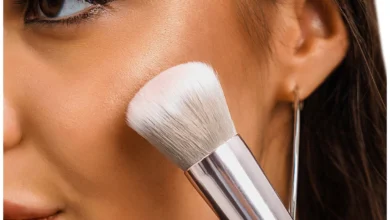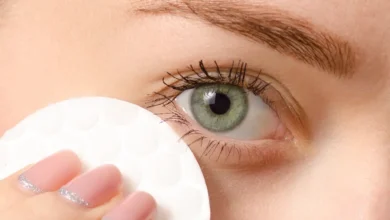
Using oil on your face can be a transformative step in your skincare routine, delivering multiple benefits when accomplished perfectly. Despite typical misunderstandings, facial oils can hydrate, sustain, and balance your skin, regardless of skin type. This manual will help you comprehend how to use oil on your face, ensuring optimal results without damaging products.
We will research selecting the suitable oils for your skin type, step-by-step application methods, and tips to enhance your skincare routine. Whether new to facial oils or looking to purify your system, this guide covers you.
What Is Face Oil?
Face oil is a skin care product that retains good fats and gives the skin essential nutrition and hydration. These oils are significant in fatty acids, nutrients, and antioxidants and come from various seeds, plants, and nuts. Face fats aid with dryness, age, and rigor by moisturizing, restoring, and rejuvenating the skin. Using face oils can give you a bright, healthy face.
Understanding the Benefits of Using Oil on the Face
Facial oils are superior in critical fatty acids, vitamins, and antioxidants. These nutrients can help:
Moisturize and Hydrate: Healthy skin requires moisturizing and hydrating. While watering effects replace water loss and moisturize the skin, creams have a wall to lock in moisture, keeping the skin soft and radiant.
Anti-aging: Anti-aging skincare targets age spots, fine lines, and wrinkles. With peptides, retinoids, and antioxidants, it improves skin brightness, boosts collagen formation, and protects the skin from damage to keep the face appearing young and glowing.
Brighten Skin: Vitamin C, niacinamide, and alpha hydroxy acids brighten skin and affect outcomes. These elements help to even out skin tone, reduce dark areas, and enhance natural radiance for a more glowing face.
Balance Oil Production: Balancing oil shows concerns about utilizing the proper skincare effects, like lightweight oils and non-comedogenic moisturizers. These effects control sebum levels and excess oiliness, keeping your skin transparent, fit, and shine-free.
Choosing the Right Oil for Your Skin Type
When you start using oil on your face, it’s essential to select the correct oil for your skin type:
Dry Skin
Opt for significant oils like argan marula or avocado oil to maintain and hydrate dry skin. These oils have essential fatty acids, vitamins, and antioxidants that greatly moisturize, enhance the skin barrier, and provide long-lasting hydration, exiting soft and flexible skin.
Oily Skin
Lightweight oils like jojoba, grapeseed, or squalane oil are ideal for oily or acne-prone skin. These oils are fast-absorbed and non-comedogenic and allow control of sebum show without blocking pores. They deliver essential hydration and food, keeping your skin balanced, clear, and fit.
Sensitive Skin
Look for soft oils such as chamomile or rosehip oil to calm and nourish sensitive skin. These oils maintain anti-inflammatory and healing rates that help reduce redness and itch while delivering gentle hydration.
Combination Skin
You can use various oils to handle different areas of your face, such as hybrid skin. Customizing your oil blend permits you to tailor your skincare routine to satisfy the unique needs of each region, providing targeted hydration and food for optimal skin health and proportion.
How to Use Oil on the Face Properly
To maximize the usefulness and minimize any potential problems, follow these steps on how to use oil on the face properly:
Step 1: Cleanse Your Face
Select a gentle cleanser suited to your skin type and rub it onto damp skin using circular movements. Rinse with lukewarm water to release dirt, impurities, and extra oil. Cleansing preps your skin for better absorption of the following effects, provided they can pierce greatly and work virtually to feed and hydrate your skin.

Step 2: Apply Toner
After cleansing, use toner as the next stage in your skincare regimen. Pour a small amount onto a cotton pad or your hands and gently apply it to your face and neck. Toner balances your skin’s pH levels, minimizes pores, and extracts any remaining dirt or cosmetics. It lets your skin soak up serums, moisturizers, and other skincare outcomes.

Step 3: Use a Serum (Optional)
Utilize a Serum in your skincare routine. Serums are light, potent formulas with powerful active components tailored to precise skin problems. Apply a little piece onto your fingertips and gently rub it into your face, employing upward motions. Serums can manage issues such as hydration, brightening, or anti-aging, providing an additional glow to your skincare regimen.

Step 4: Apply the Oil
Apply a few drops of the face oil of your choice at your fingertips. Gently rub the oil between your palms and find and apply it to your skin, working your way outside from the middle. Avoid massaging or tugging on your skin. Allow the oil to immerse fully before moving with your moisturizer to lock in hydration and symbolize the benefits of the oil.

Step 5: Layer with Moisturizer
Select a moisturizer for your skin type and apply a small amount over your face and neck. Gently pat it onto your skin utilizing upward movements until fully immersed. Moisturizers help seal moisture, maintain a barrier, and protect against environmental stressors, making your skin soft, smooth, and relaxed.

Tips for Using Oil on the Face
Patch Test
A patch test can ascertain a painful skin reaction to a new product. Use a tiny quantity behind your ear, on your wrist, or wherever unseen. Take 24-48 hours to observe the region if you experience redness, itching, or inflammation.
Use sparingly
When using oil on your face, use a small amount, such as a few drops, and gently rub it into your skin. You can still add more if required, but creating helps control over-application, providing your skin accepts the correct quantity of hydration without handling it smoothly.
Night Application
While oils can impart a healthful glow, they may also leave your skin looking shiny. Applying oil to your face at night is helpful as it gives your skin much time to absorb the nutrients without stressing about occurring shiny during the day, permitting you to wake up with sustained, glowing skin.
Avoid Eye Area
To avoid irritation, carefully handle the light eye area when utilizing oil on your face. Use mild patting movements with your fingertips to apply the oil near the eyes, avoiding direct contact with the soft skin. This protection helps prevent irritation and ensures the sharp eye is comfortable and shielded.
Store Properly
To preserve the rate of your facial oils, keep them in a cool, dark place away from raw sunlight and heat sources. Exposure to light and heat can cause oils to oxidize and turn rancid, reducing their significance. Holding them in optimal situations assures they remain fresh and full for longer, maximizing their skincare uses.
Common Concerns and Misconceptions
Will Using Oil on Face Cause Breakouts?
One common problem with using oil on the face is that it will cause escapes. While this fear is intelligible, not all oils are comedogenic. Non-comedogenic fats like jojoba and argan oil are unlikely to block pores and cause acne. Some oils, such as tea tree oil, also maintain antibacterial properties that help treat acne. Selecting a suitable oil for your skin type reduces the risk of spills.
Can You Use Oil on Face if You Have Oily Skin?
Defiant to common belief, utilizing oil on the face can help oily skin types. Precise oils, such as jojoba and grapeseed oil, emulate the skin’s natural sebum and can aid in controlling oil show.
Additionally, weightless oils like squalane can hydrate without blocking pores. However, selecting and utilizing non-comedogenic oils is essential to evade deepening oiliness. Testing other oils can help you find the best ones for your skin.
DIY Face Oil Recipes
Creating your blend can be rewarding if you prefer a personalized touch. Here are a couple of DIY recipes:
Hydrating Facial Oil
Use our thrilling DIY Hydrating Facial Oil formula to treat your skin. Mix one tablespoon of nutritional argan oil with two tablespoons of moisturizing jojoba oil. Then, to help you feel sufficient, add a few drops of lavender’s soothing oil.
This luxury blend provides extreme hydration, stimulates skin renewal, and equips a relaxing aromatherapy experience, leaving your skin sustained, glowing, and beautifully restored. Spoil in a luxury pampering session with our Hydrating Facial Oil medicines today.

Anti-Aging Facial Oil
Mix two tablespoons of rejuvenating rosehip oil with one tablespoon of antioxidant pomegranate seed oil. Enrich the blend with five drops of luxurious frankincense essential oil, known for its skin-renewing properties.
This rugged concoction fights signs of aging, enhances skin elasticity and makes your complexion radiant and youthful. Embrace the power of natural components with our Anti-Aging Facial Oil recipe for timeless beauty.

Conclusion
Oil on the face can change your skincare routine, providing hydration, anti-aging advantages, and a radiant glow. By selecting the right oil for your skin type and obeying proper application techniques, you can harness the full potential of facial oils without any downsides.
Always perform a patch test first, then modify your skincare routine in response to your skin’s sensitivity. Accept the benefits of face oils for brighter, more radiant skin.
FAQs
Which Oil is Suitable for Glowing Skin?
Oils like rosehip argan and marula are incredible for giving your skin a nutritious glow because of their rich nutrient content.
Can I apply oil on my face instead of moisturizer?
Yes, oils can return moisturizers, particularly for dry skin. However, some may prefer to layer oil and moisturizer for extra hydration.
Do you put face oil before or after face wash?
Apply face oil after cleaning your face. Begin with a clean face utilizing a gentle cleanser, then follow with toner and serum if preferred. Finally, apply the face oil to lock in water and deliver nutrition.
What are the signs that show oil is non-comedogenic?
The jojoba and hemp seed butter are non-comedogenic oils less likely to clog skin. Research and choose oils especially marked as non-comedogenic.








